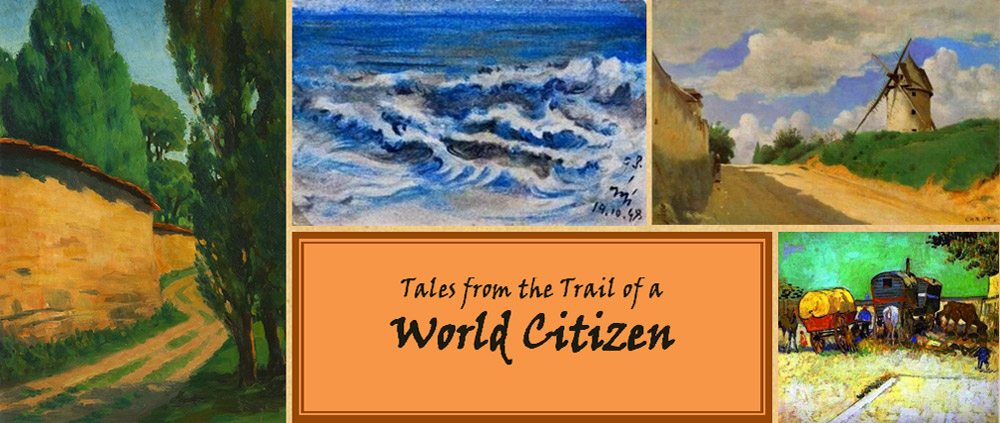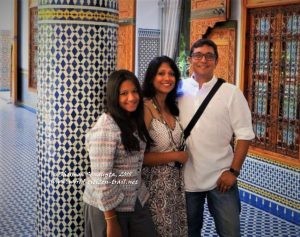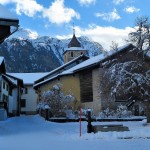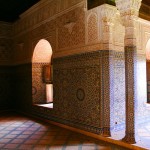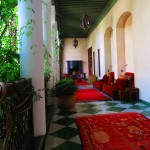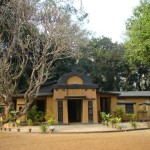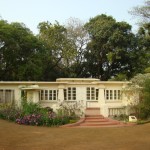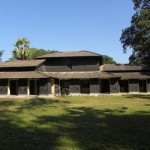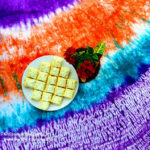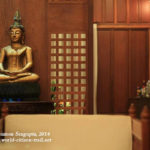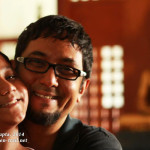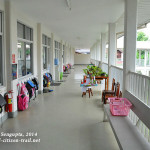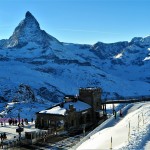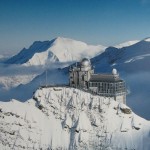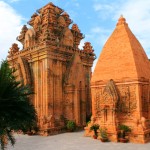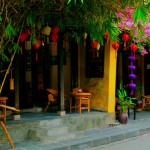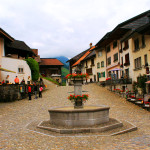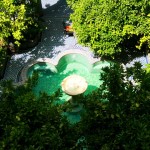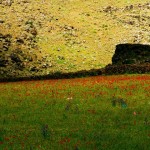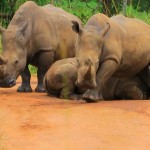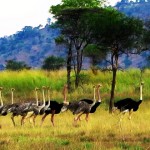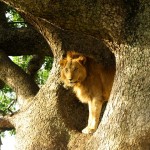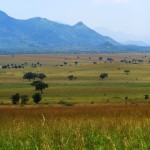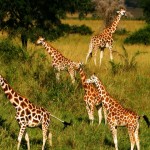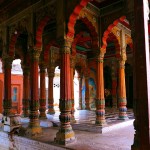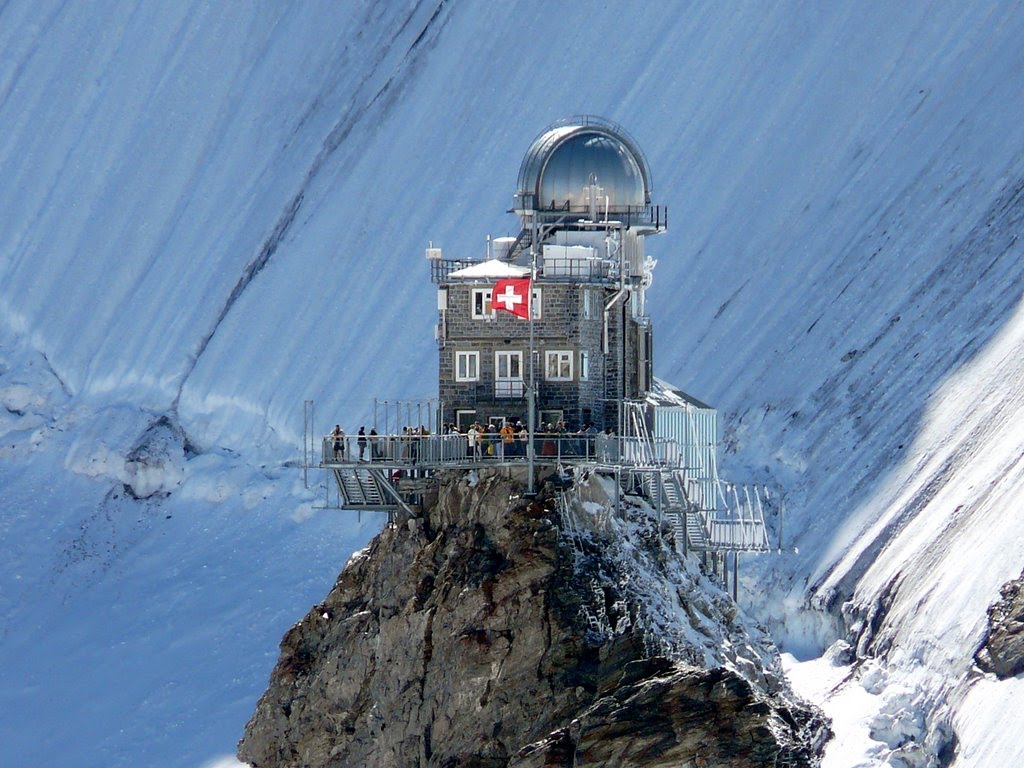
Source: Internet
From our base at Interlaken, we visited Jungfraujoch (or Jungfrau) – popularly known as the “Top of Europe”. A rugged, high-Alpine wonderland of snow, ice, glaciers and jagged rocks and peaks, it is located at 11,332 feet above sea level, and hosts the highest railway station in Europe.
The train journey from Interlaken to Jungfraujoch is done in three stages, using three different railways. The first leg from Interlaken to Lauterbrunnen is on the Yellow-Blue Bernese Oberland Railway. From Lauterbrunnen, the Yellow-Green Wengernalp Railway runs till Kleine Scheidegg. And finally, from Klien Scheidegg, the Red-Yellow Jungfraujoch Cog Railway runs right up to the top of Jungfraujoch. The last leg is particularly remarkable because seven out of nine km between Kleine Scheidegg and Jungfraujoch is through a tunnel, dug deep inside the mountain.
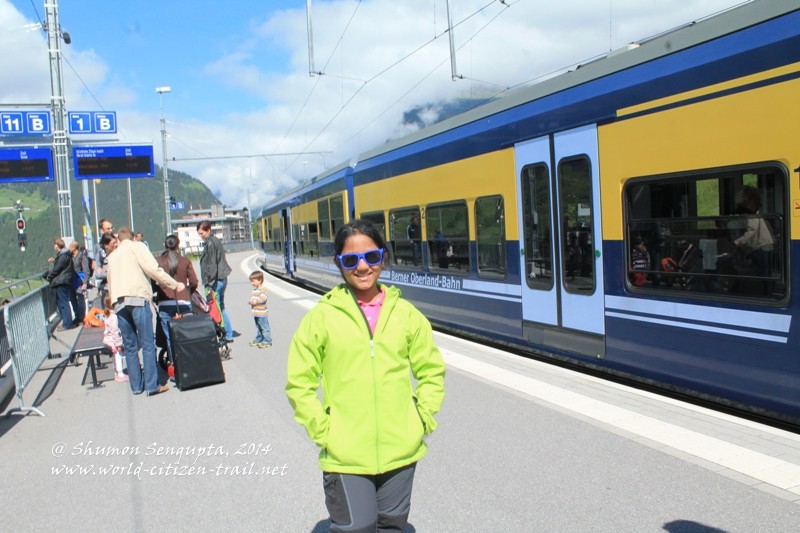
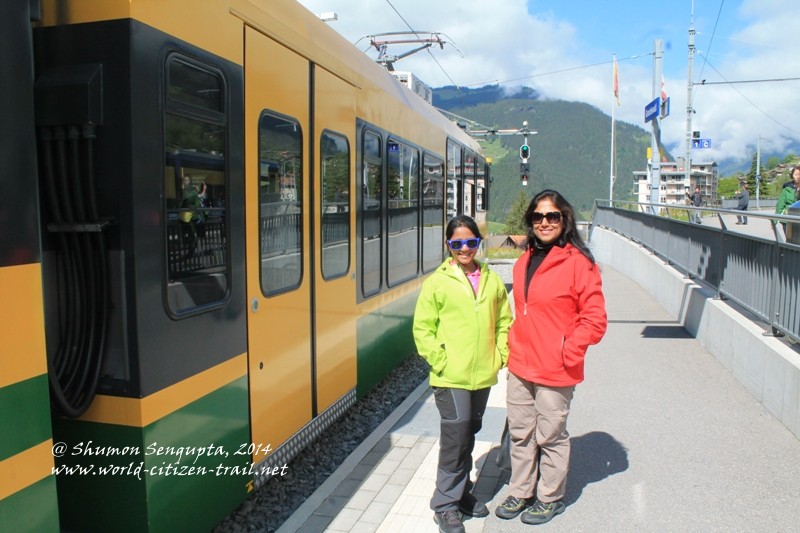
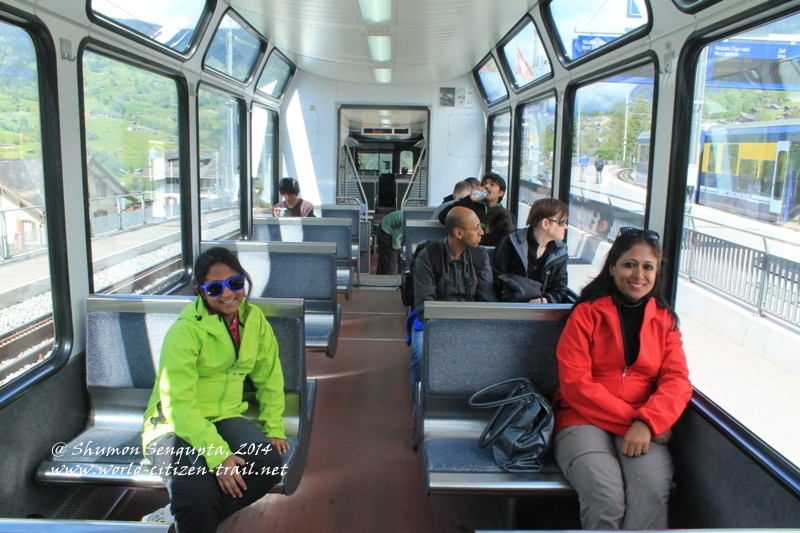
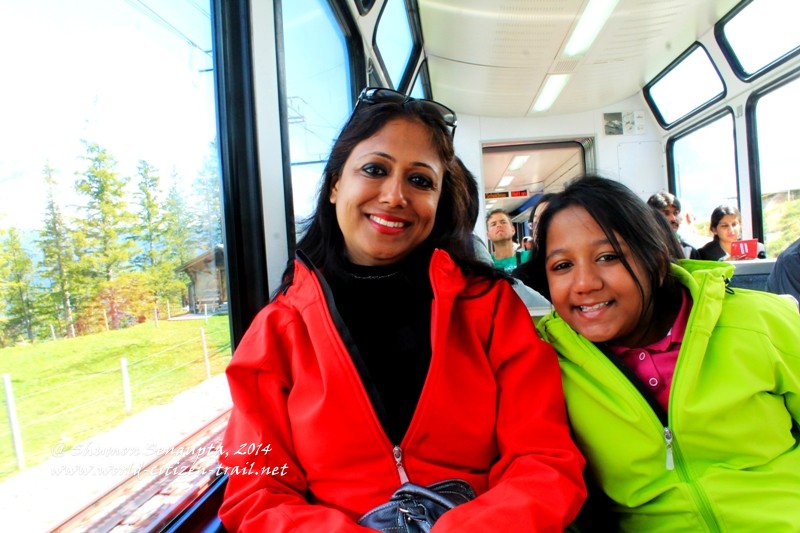
Our day trip began early in the morning from Interlaken Ost railway station (1,860 feet), from where we boarded the train to Lauterbrunnen (2,612 feet).
I have described the Lauterbrunnen valley at some length in another post. This narrow valley is situated in between tall, steep, perpendicular limestone cliffs, and because of its topography, it has numerous waterfalls that plummet vertically from soaring heights. Some of these waterfalls are so high that by the time the water reaches the valley floor, all that remains is a spray.
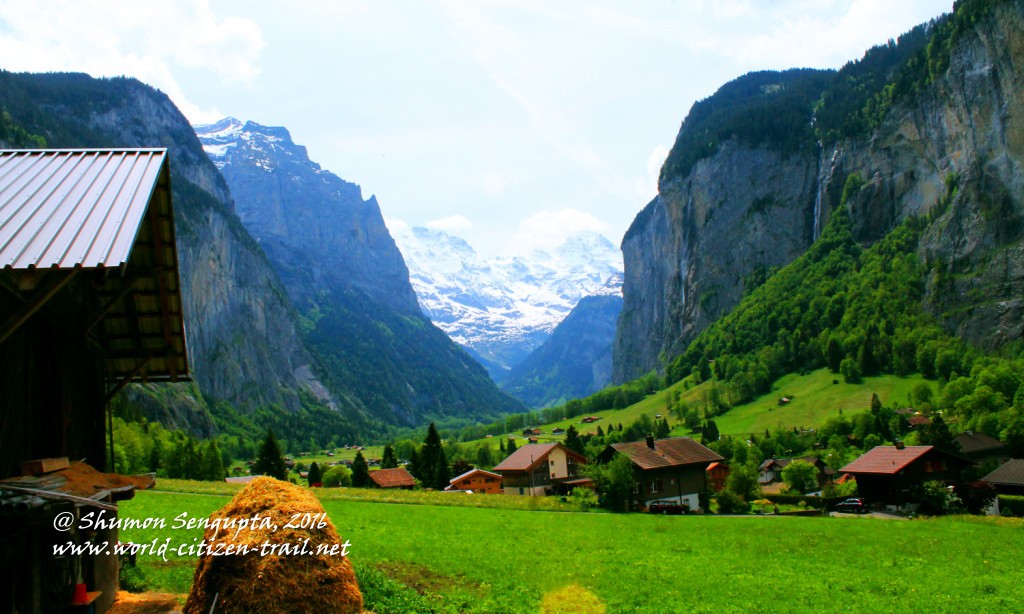
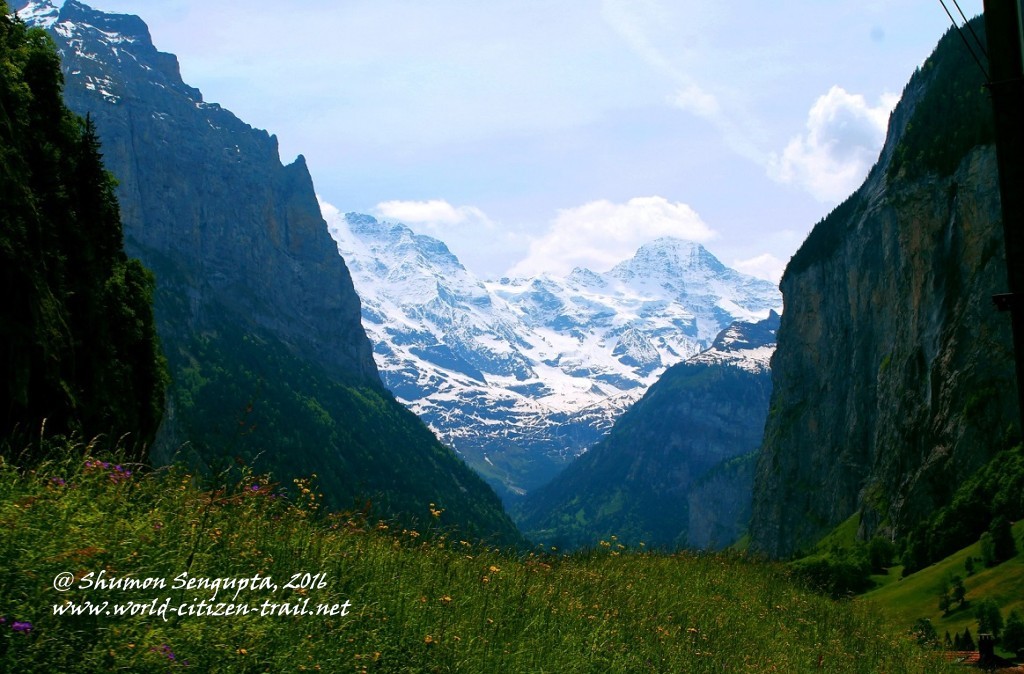
With sheer cliffs bearing gigantic rock faces on either sides, snow-capped mountain peaks at a distance, seventy two waterfalls plummeting vertically from dizzying heights, the Weisse Lutschine river flowing along the valley floor, and scattered little villages, hamlets and meadows, the Lauterbrunnen valley is probably one of the most beautiful places on earth. We changed our train here and ascended to Kleine Scheidegg (6,762 feet).
Kleine Scheidegg is a high mountain pass, between the towering Eiger and Lauberhorn peaks of the Bernese Oberland region of Switzerland. It is a popular skiing destination in winter and hiking destination in summer. Hiking trails connect Kline Scheidegg with Grindelwald, Wengen and Lauterbrunnen.
Here we had ten minutes to change our trains, and took this opportunity to take in the amazing Alpine views all around us.
What makes the mountain pass and the tiny railway station of Kleine Scheidegg uniquely spectacular is that it is located north of the point where Mount Eiger makes a sudden and striking angle. From this location, a series of towering peaks rise and stretch in the northeast direction. We got a spectacular view of the formidable north face of Eiger from this place. On the southern side of Mount Eiger are the summits of Mönch, Jungrasu, Gletscherhorn and Mittaghorn – the views are intimidatingly beautiful.
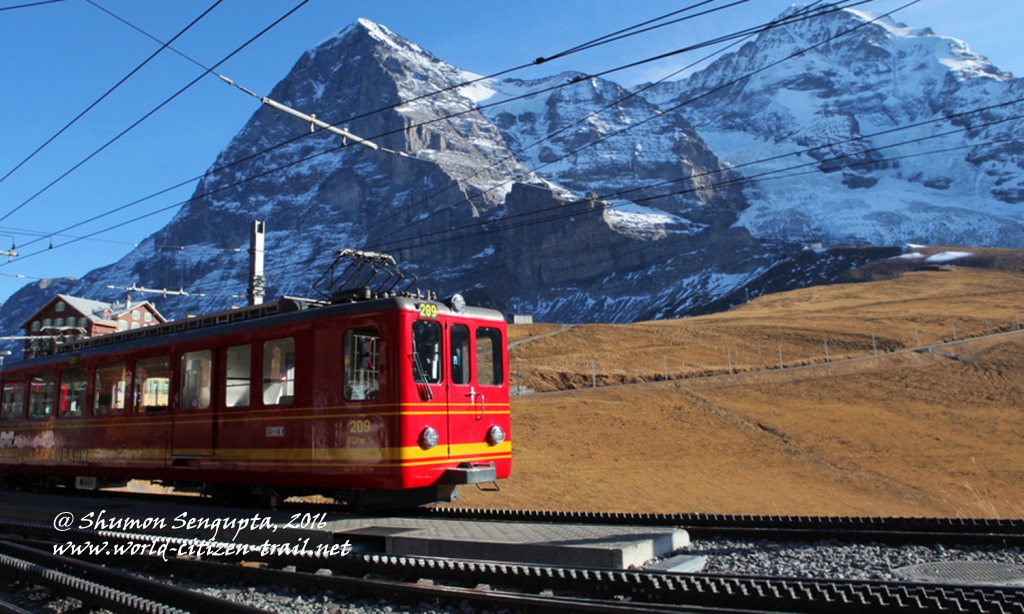
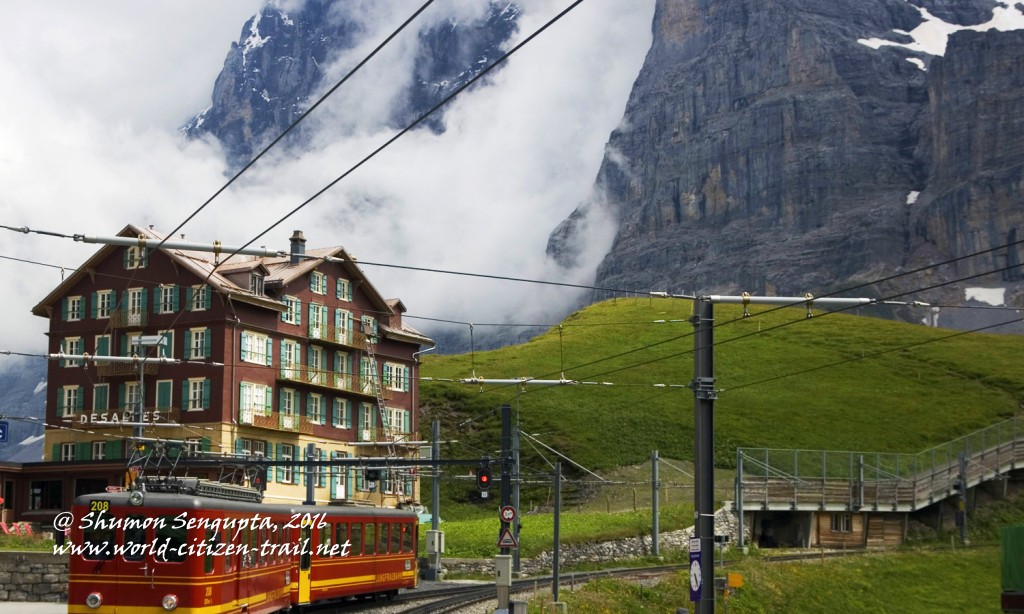
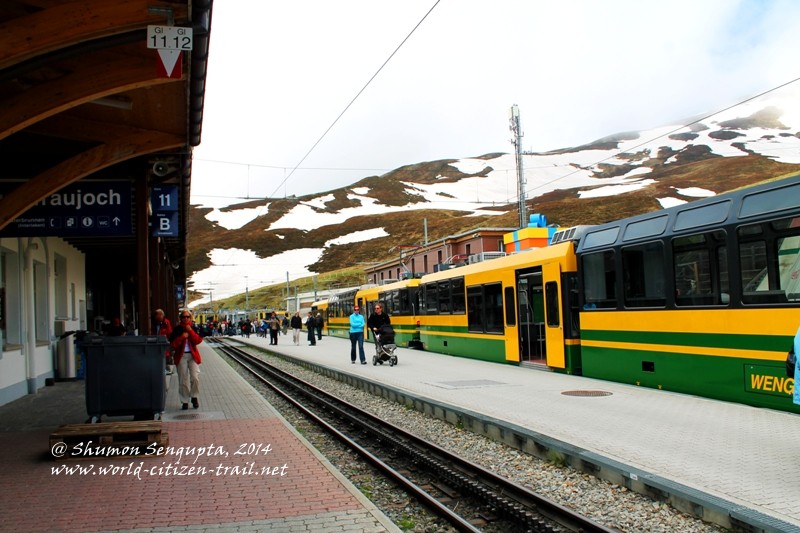
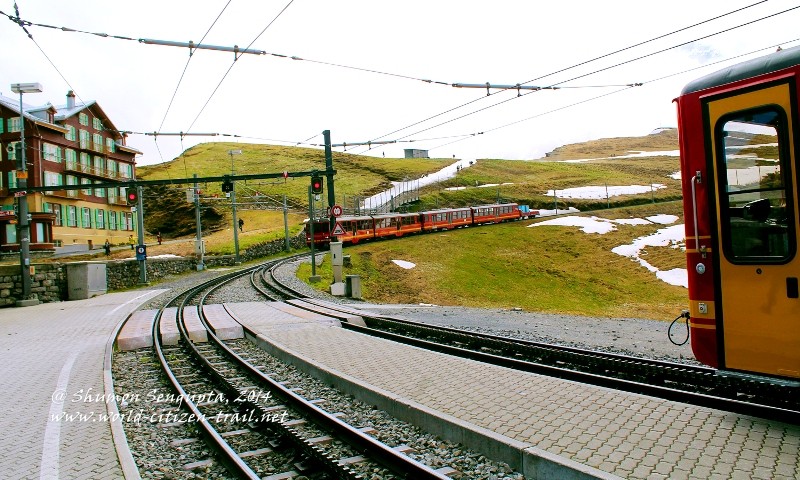
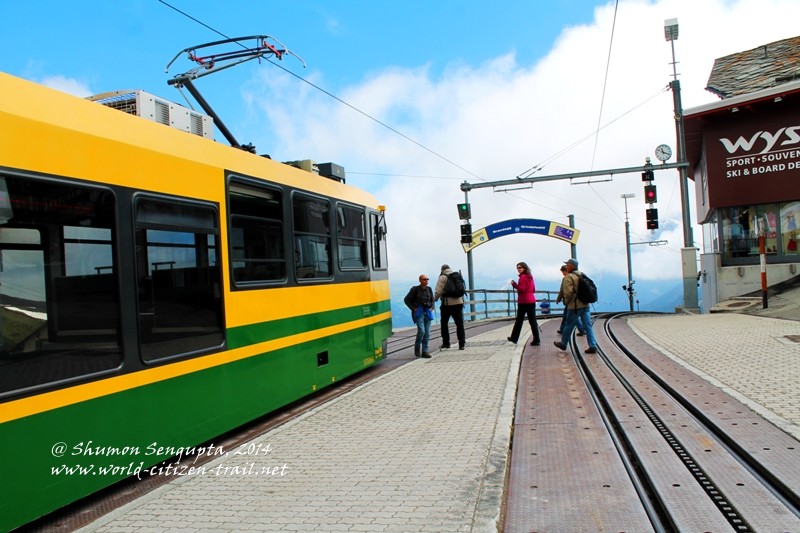
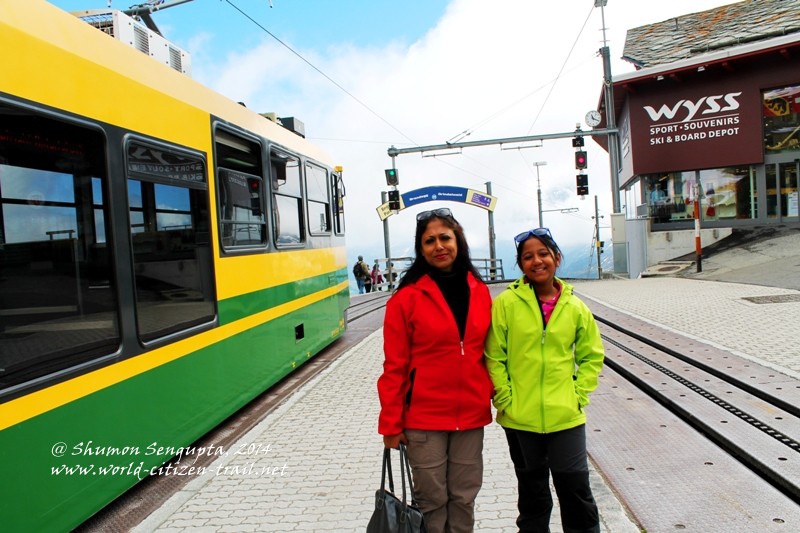
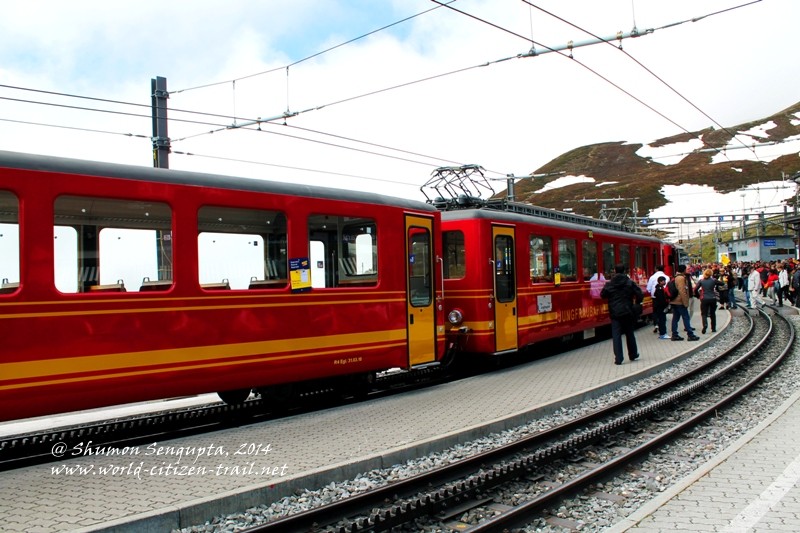
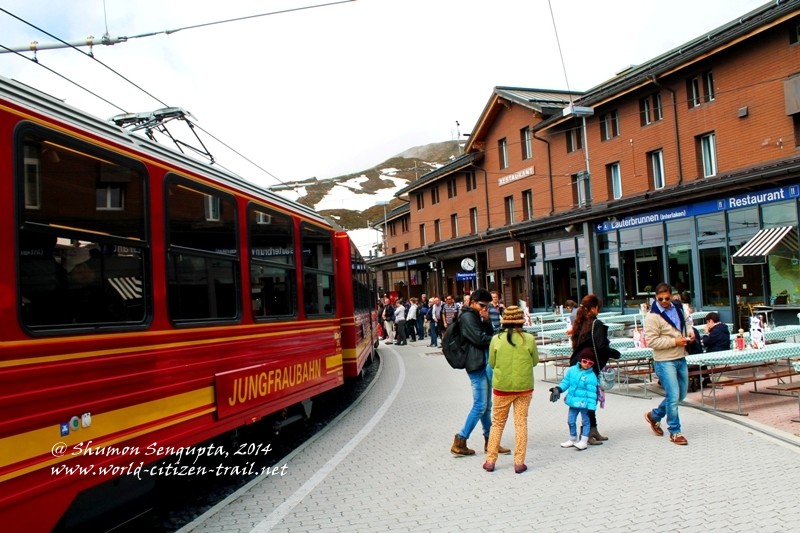
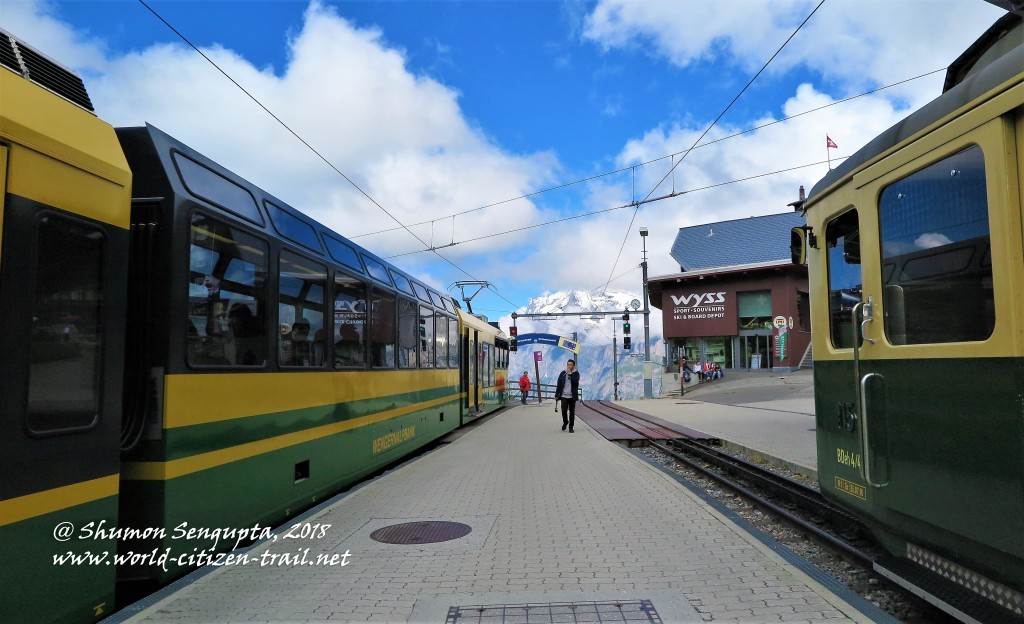
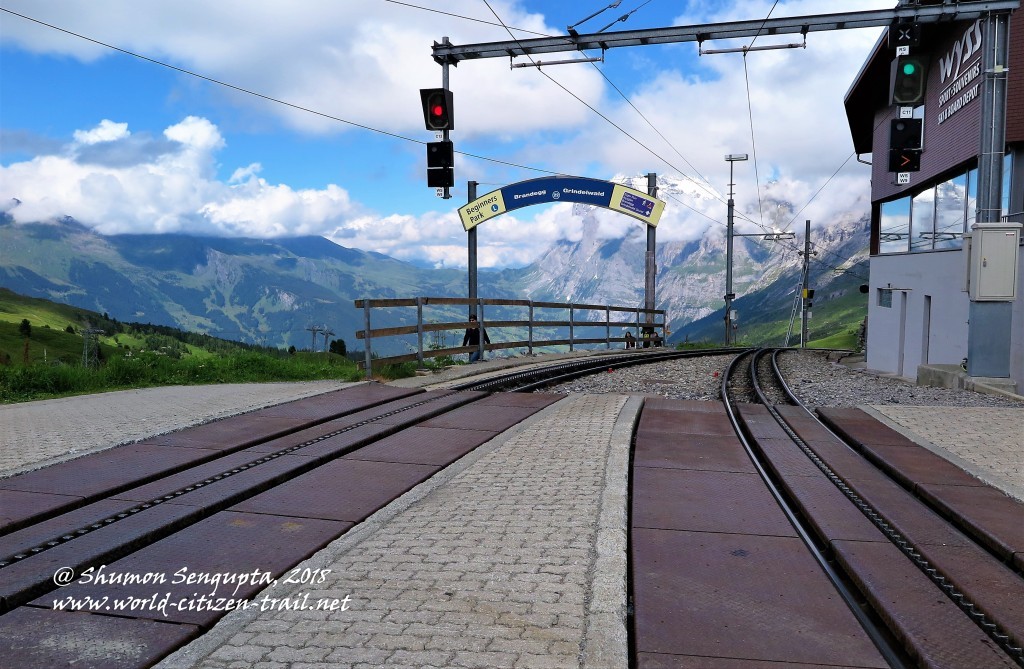
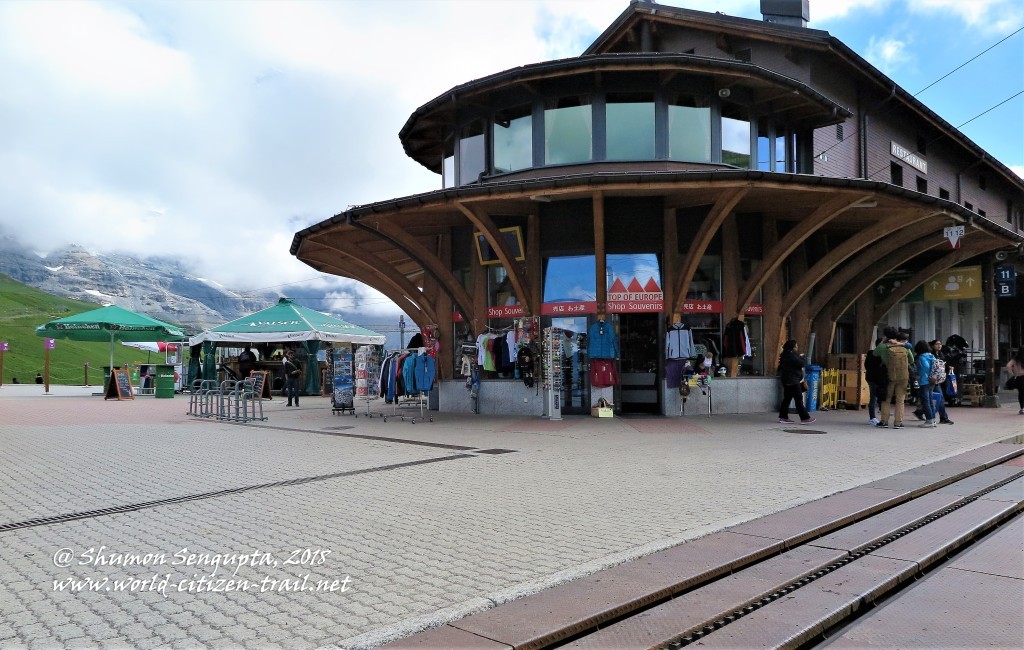
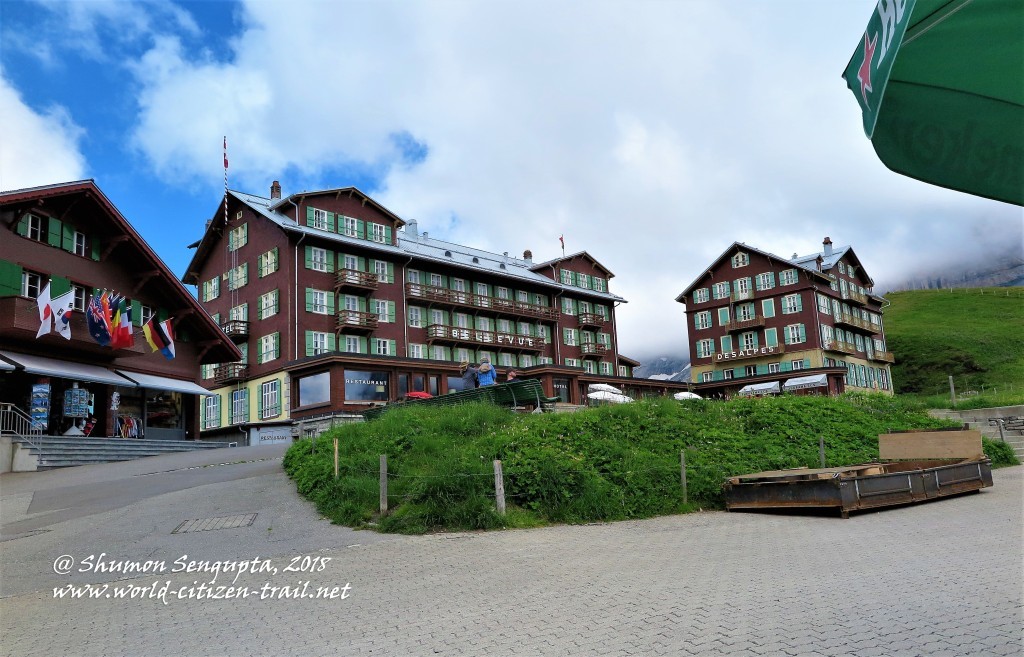
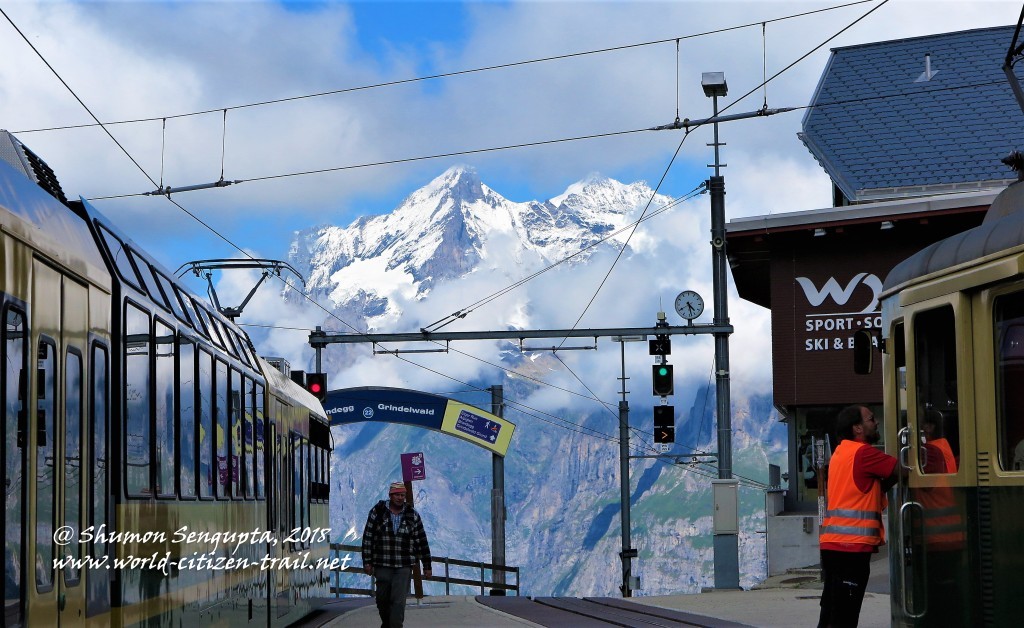
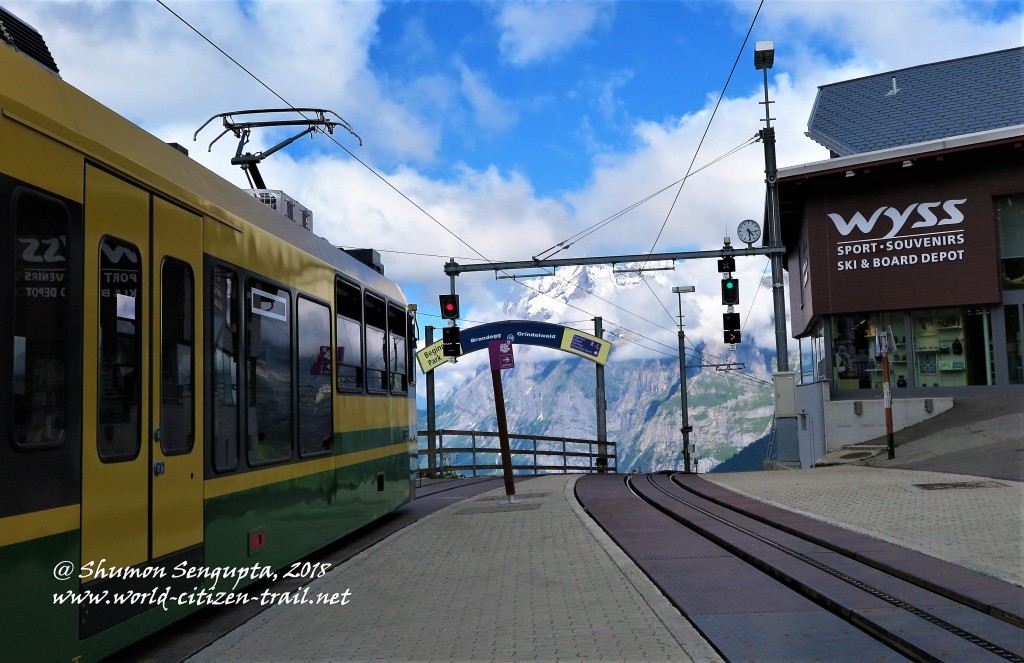
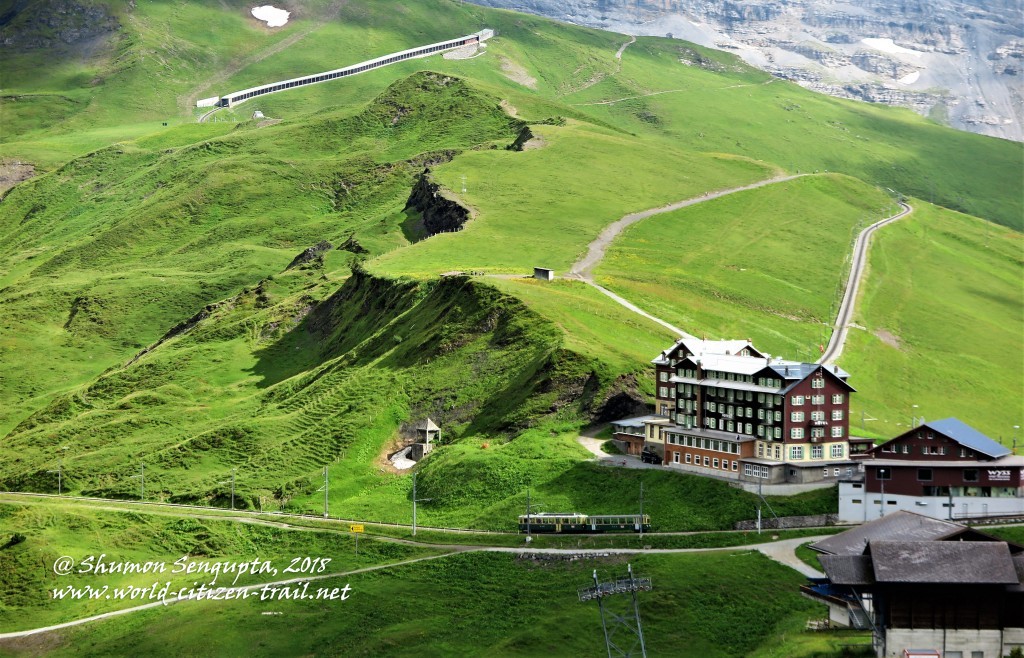
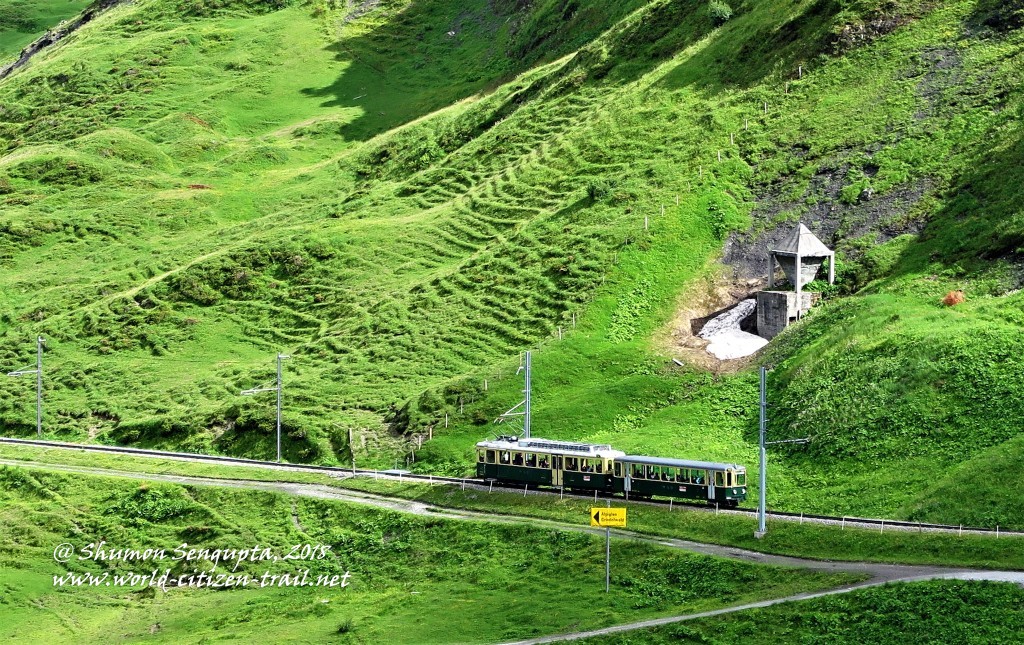
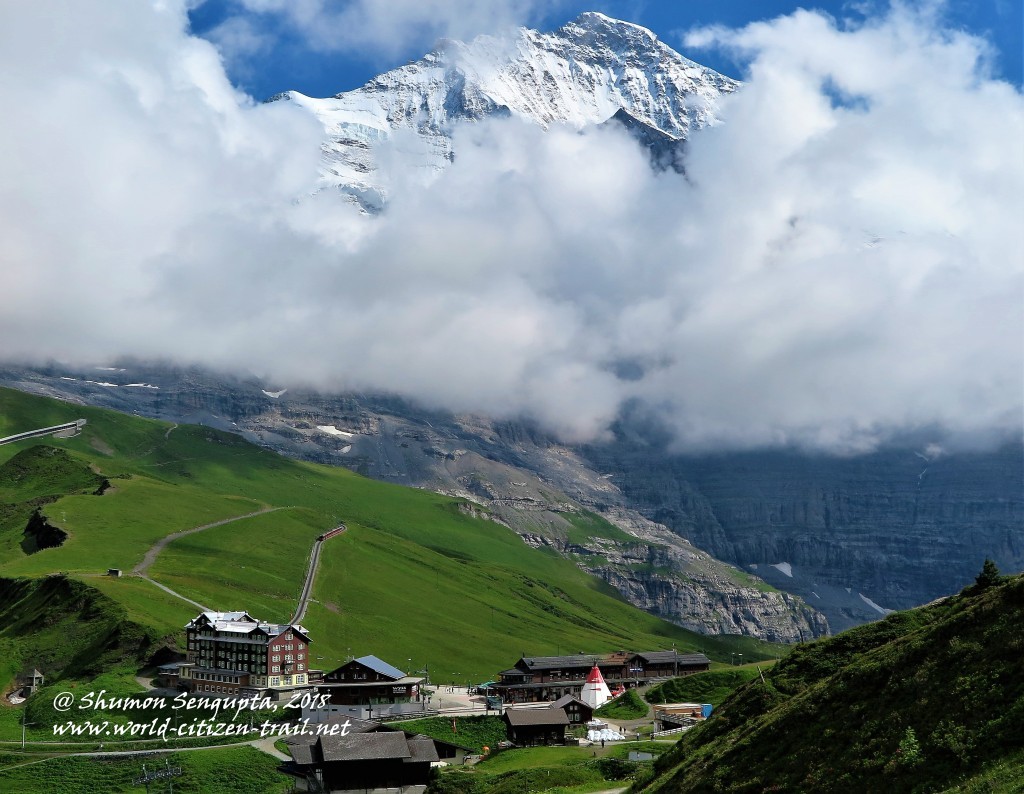
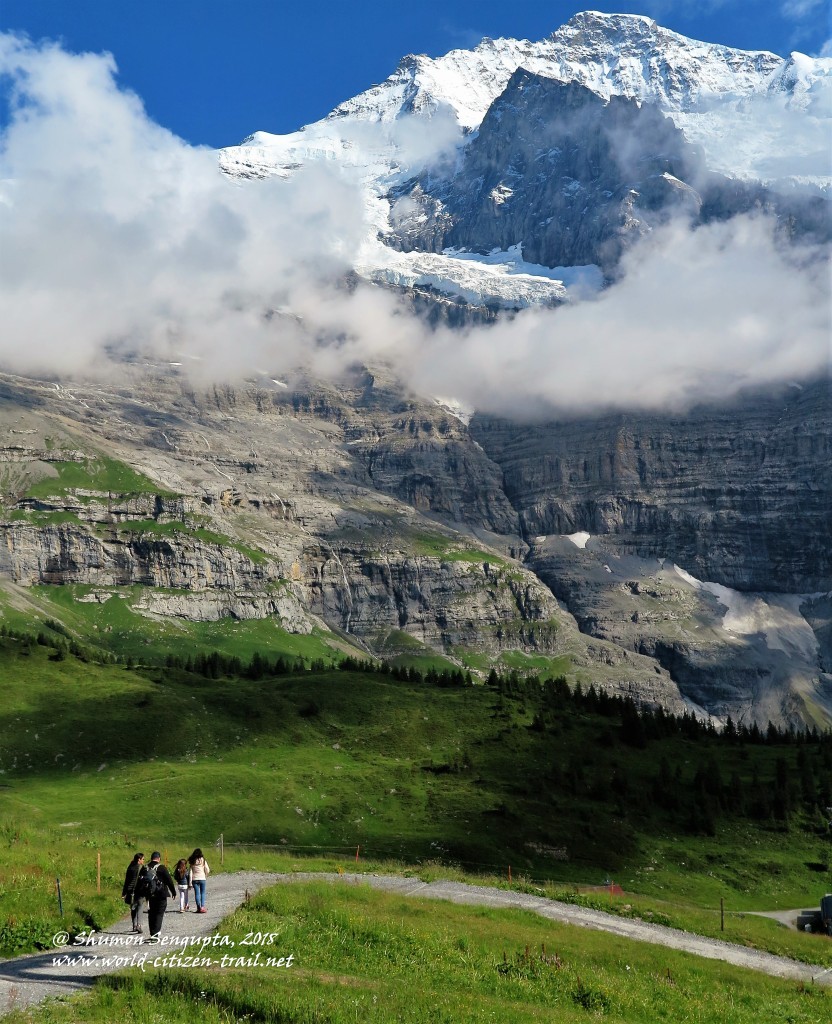
From Kliene Scheidegg, our cog wheel train took a steep ascend and entered into a seven km long tunnel (built between 1896 and 1912) cutting through Mount Eiger and Mönch. Our train stopped briefly twice – at Eigerwand (9.396 feet) and Eismeer (10,361 feet), before reaching Jungfraujoch.
Located inside the mountain, along the tunnel, tiny Eigerwand and Eismeer stations have viewing windows bored into the rocks, from where one can have an amazing view of the Alpine landscape. From the viewing window at Eigerwand, we could gaze straight down on the famous north face of the Eiger, and from the Eismeer window, we got a great view of the Grindelwald-Fiescher glacier – a vast expanse of snow and ice.
The journey through the tunnel took about 45 minutes and ascend was very steep – the incline being as high as 25 degrees at certain places. Between Kliene Scheidegg and Jungfraujoch, we climbed about 4,600 feet. This particular leg can feel quite claustrophobic, cramped, stuffy and uncomfortable because of the high altitude and heavy crowd of tourists. But the very thought of the technological marvel of this tunnel train and what you experience at the top, at Jungfraujoch, makes it every bit worthwhile.
Eventually, we reached the underground train station at Jungfraujoch summit, located is at the base of the futuristic looking observatory called the Sphinx. An elevator ascends from the subterranean train station, up the observatory hall.
The Sphinx observatory, built at an altitude of 11,715 feet, is a tall, slender and imposing, concrete-metal-glass structure, precariously perched on top of a steep, narrow, rocky cliff. It was built in 1937; 25 years after the train station opened. A metal-grate terrace is built around the observatory, providing 360 degree views of the high alpine landscape, including the 11,333 foot high Aletsc Glacier.
The perpetually snow bound observatory, which serves as a research station for subjects such as glaciology, astronomy, meteorology, radiation, and cosmic ray studies lies in the heart of a pristine high-alpine environment.
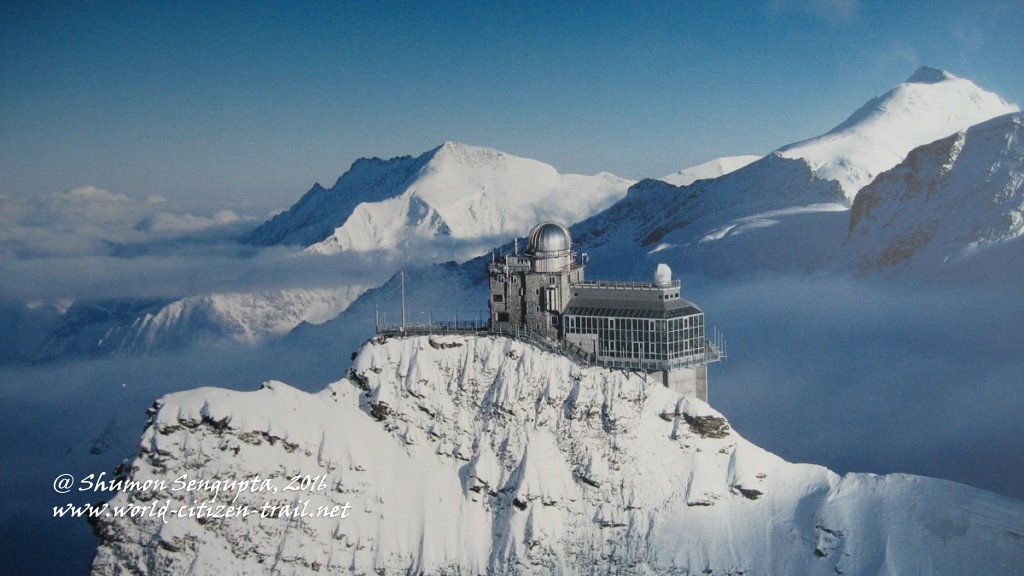
Source: sphinx-observatory-gessato-gblog
From the lift, we approached the circular glass paneled observation hall, from where we got breathtaking views of the craggy peaks, glaciers and seemingly endless expanses of snow and ice.
There are a few restaurants (including Restaurant Bollywood), an impressive Lindt Chocolate workshop and souvenir shops at the observatory building. We had a quick lunch and then went out on the open-air decks, around the observatory. The views all around were jaw-dropping; we could see the Aletsch glacier right at the foot of the observation deck. With a length of 22 km, the Aletsch is the longest glacier in the Alps.
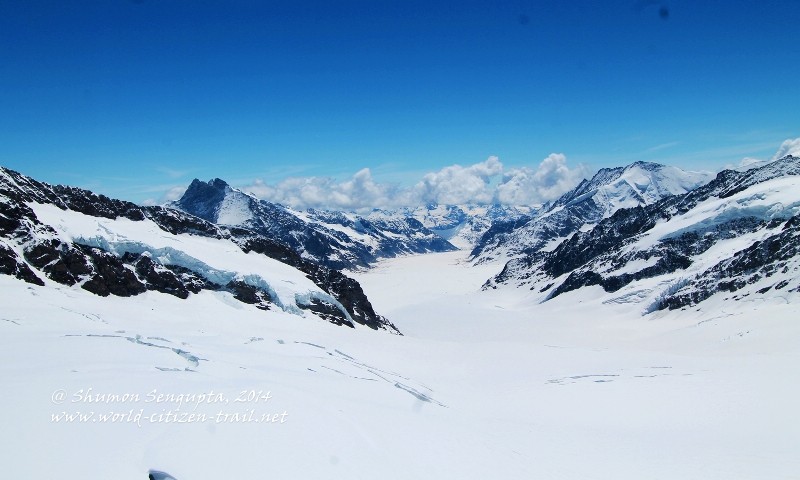
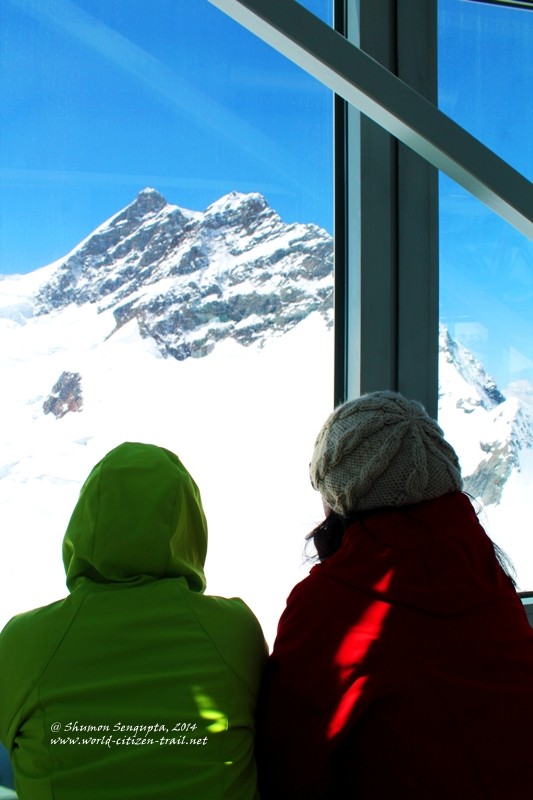
From the observatory, we descended once again to the level of the train station, from where we walked along a tunnel, to reach the ‘Alpine Sensation’ – an exhibition (of images, light and music) that was opened in 2012 to mark the centenary of the Jungfraujoch Railway. We got to learn about the history of the Jungfraujoch railways here.
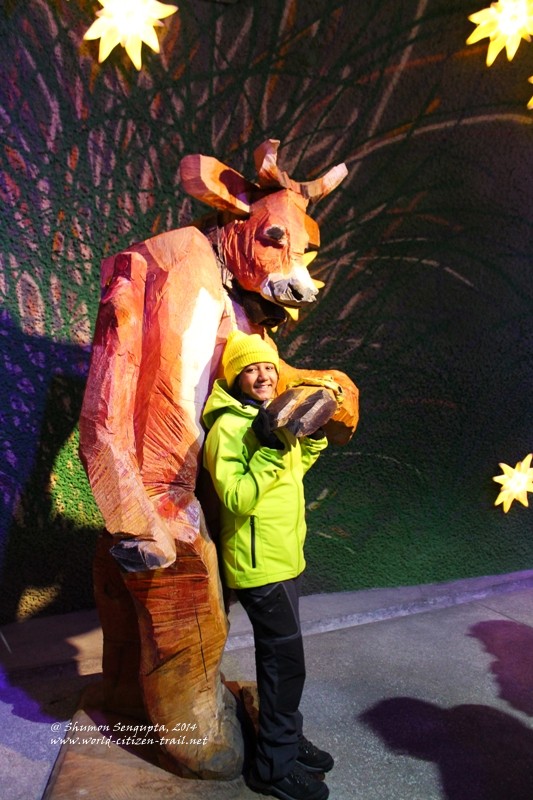
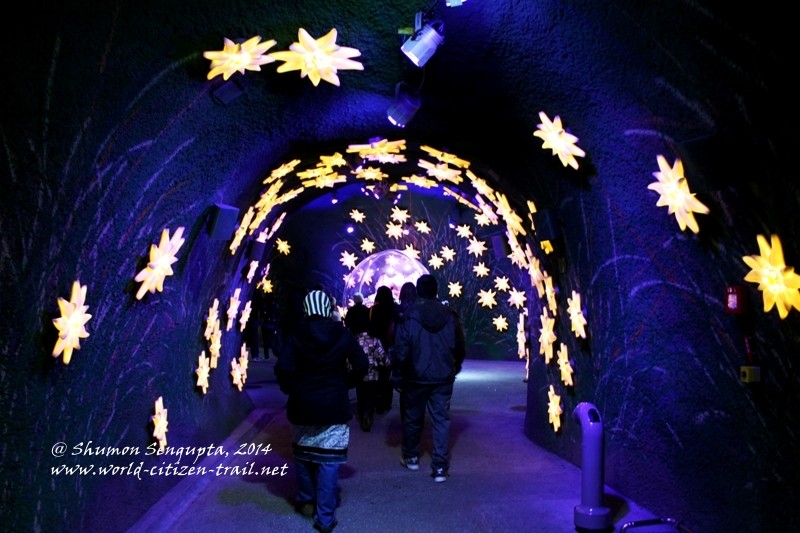
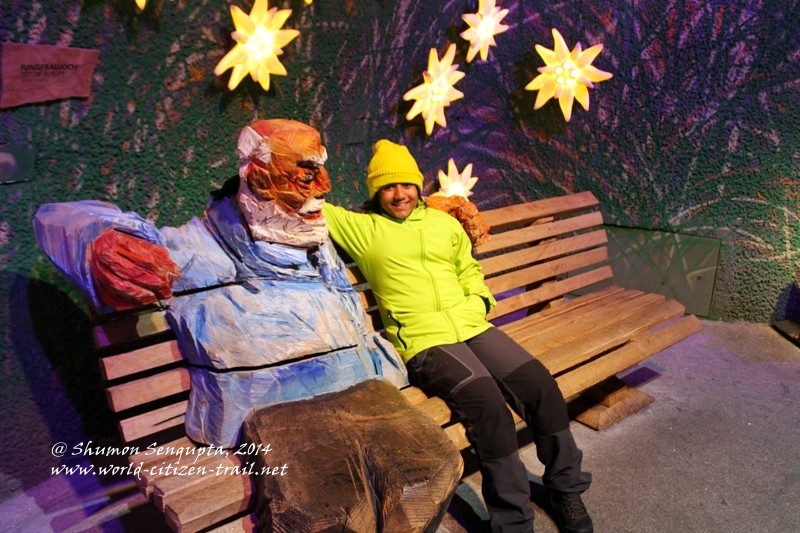
From the ‘Alpine Sensation’ exhibit, we took another tunnel to what is called the ‘Ice Palace’ – a sparkling, blue, sub-zero world of sheer ice. The ‘Ice Palace’ is a set of cavernous halls and corridors with vaulted ceilings and arches hewn into the ice, deep under the glacier. It had beautiful ice sculptures carved out in corners and niches. The floor, also solid ice, was quite slippery. The ‘Ice Palace’ gave us a shuddering feel of the world deep under a glacier.
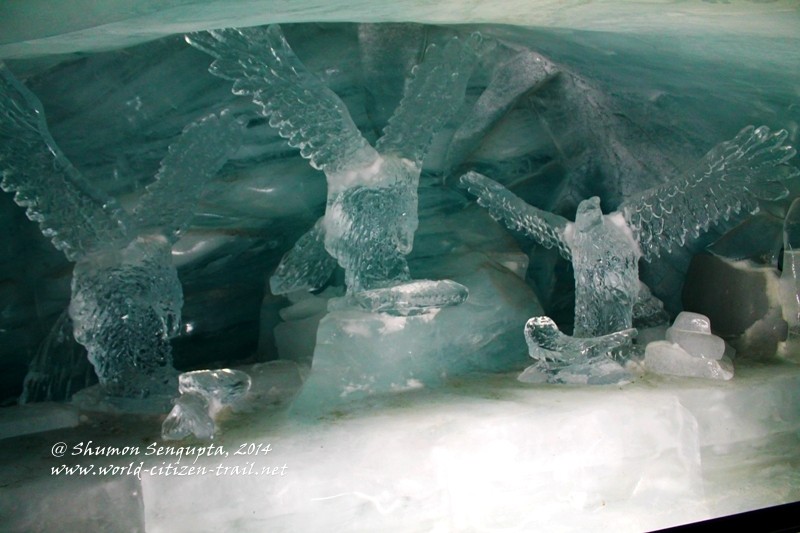
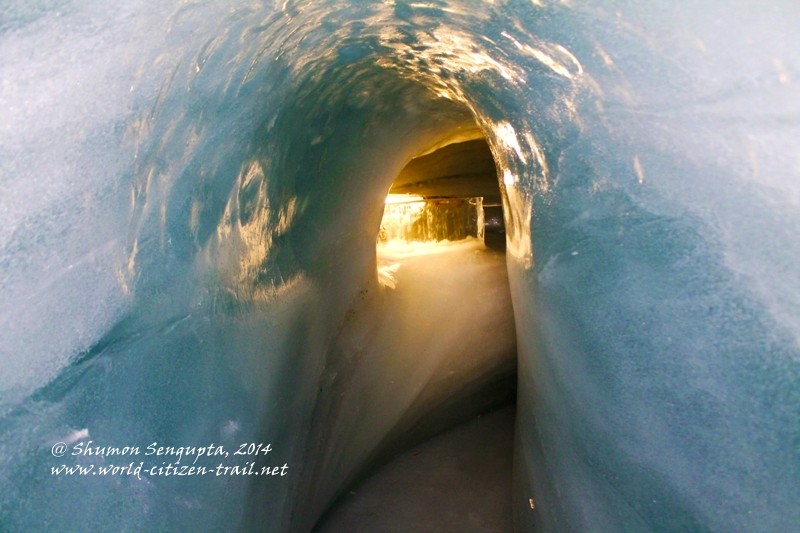
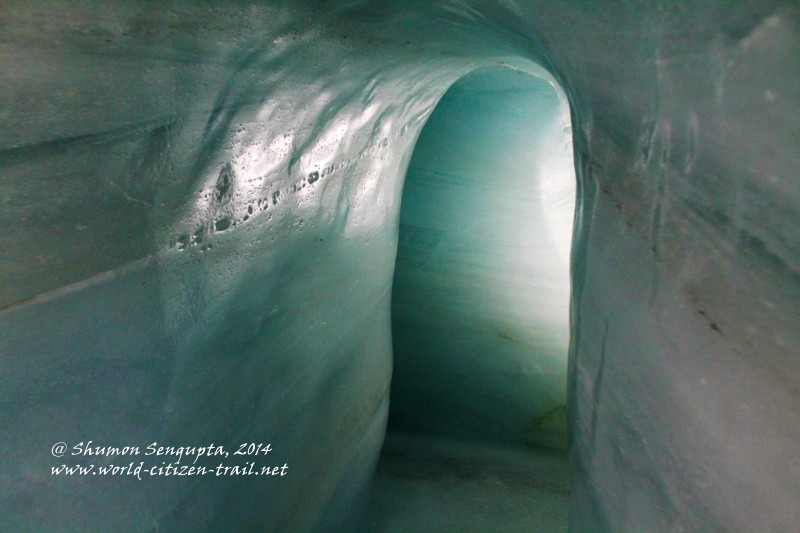
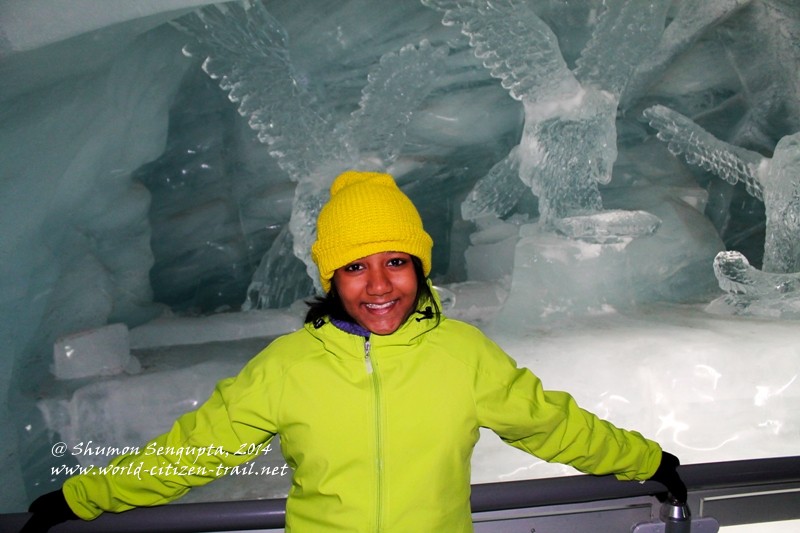
There is a Snow Park outside the Sphinx – a vast, open glacier plateau where you can go sledging, skiing and snowboarding. It was a bright and sunny day, and as we got out from the tunnel into the Snow Park, we found everything blanketed in snow all around us. It took our eyes some time to adjust to the bright light reflecting off the snow and ice.
In good weather, there is an option to take an hour long hike across the glacier. But we decided not to push our limits and opted for somethin easy. We spent more than two hours in the park, sledging, snowboarding, snow tubing, going on a zip-line over the snow. My ten year old daughter – a spirited traveler at her age – and I enjoyed a great snowball fight.
We spent a good part of the early afternoon, having fun at the Snow Park, and then it was time to return to Interlaken.

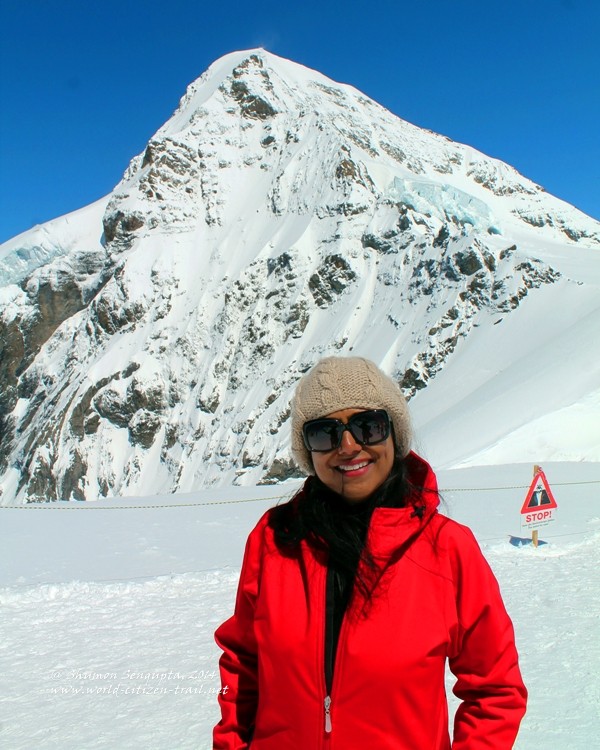
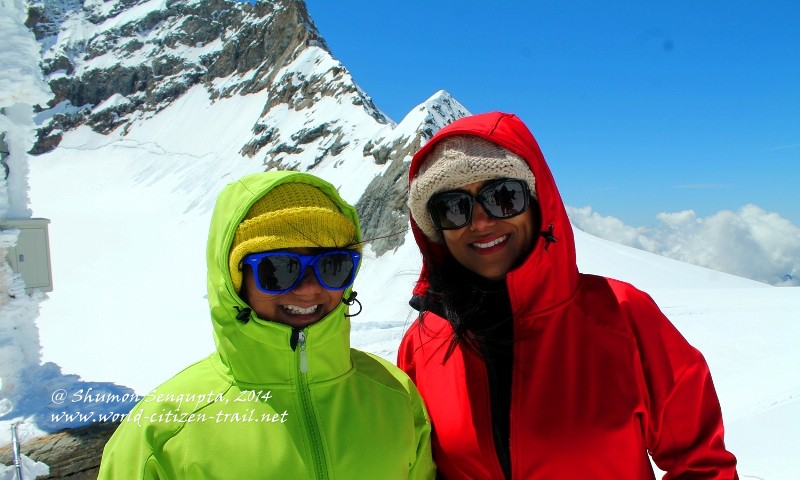
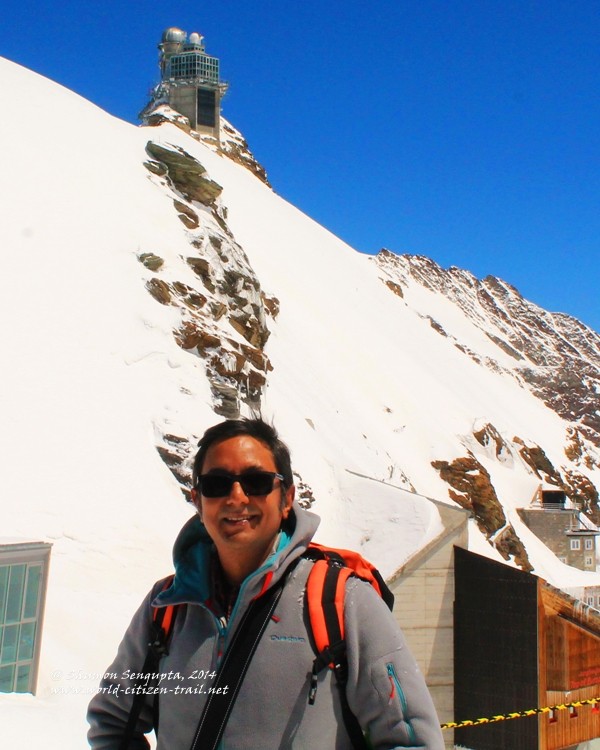
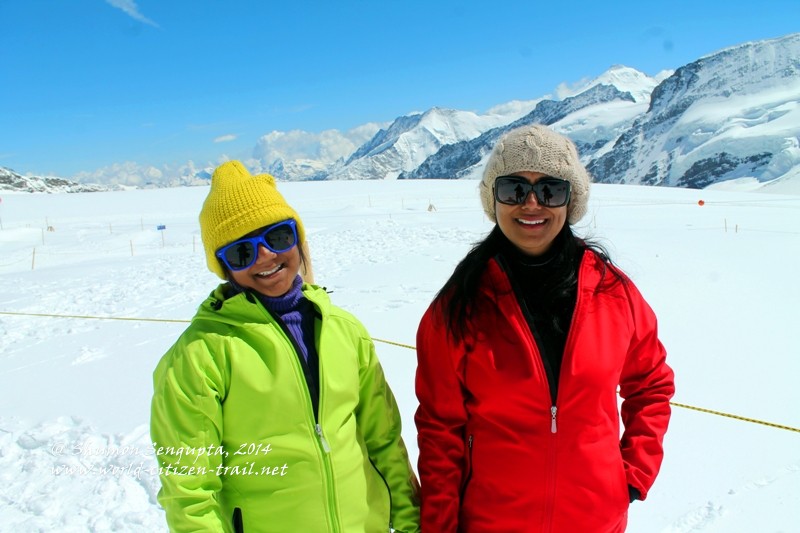
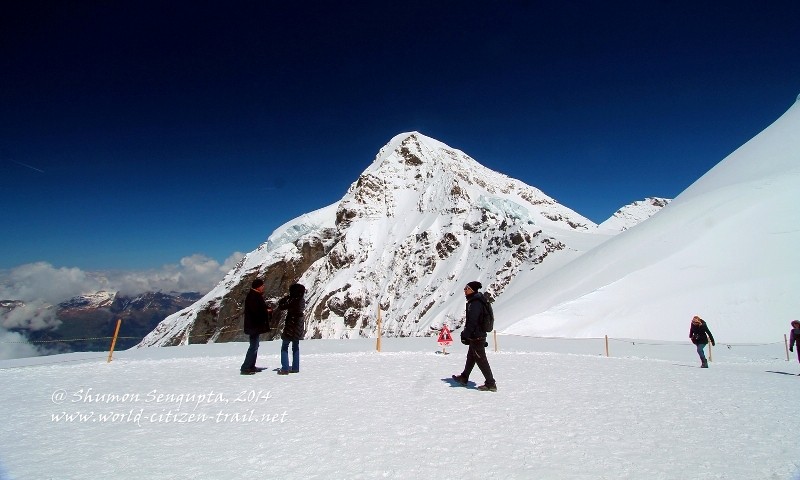
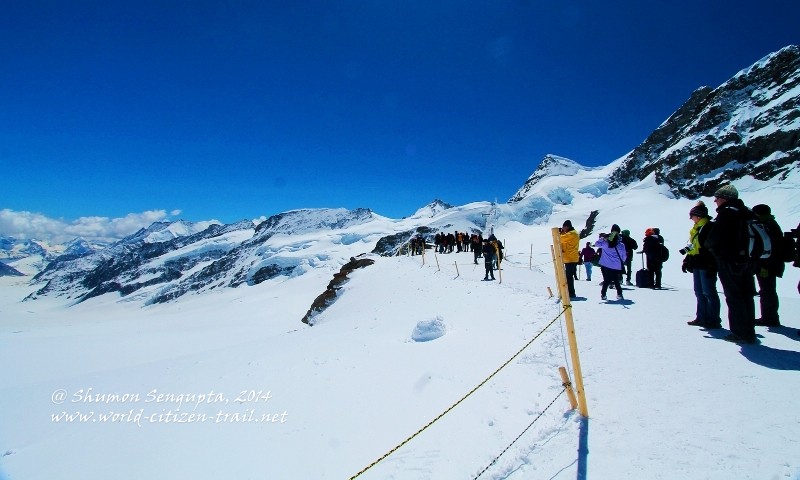
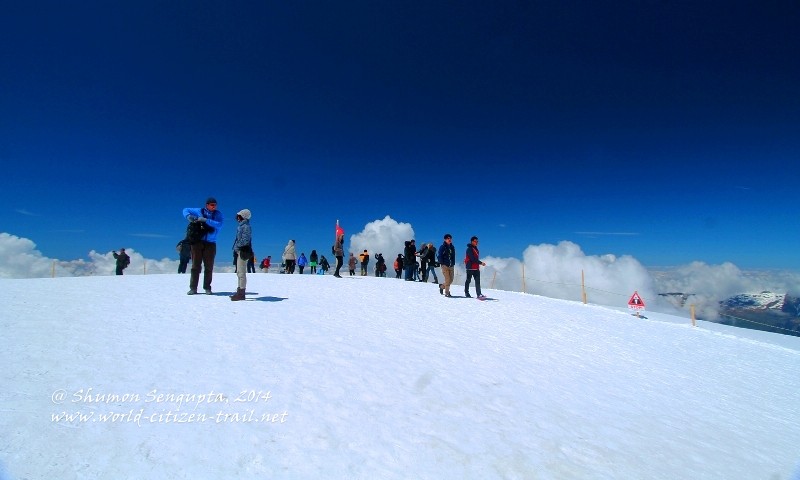
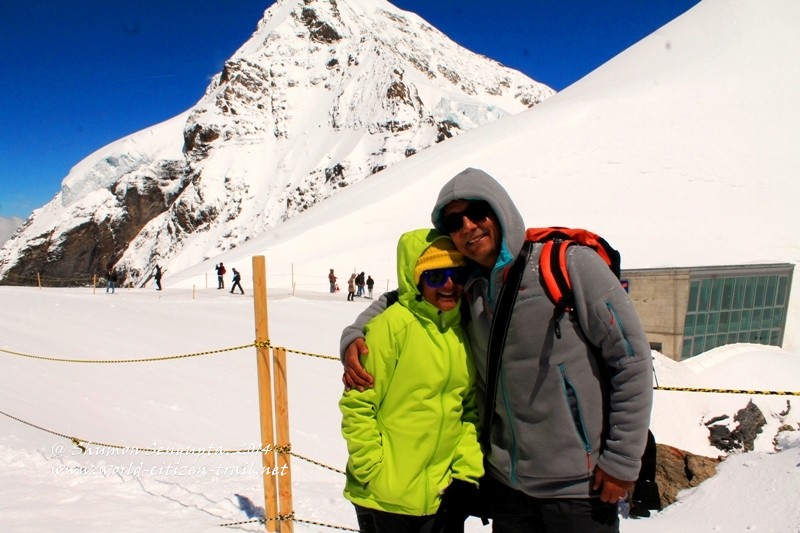
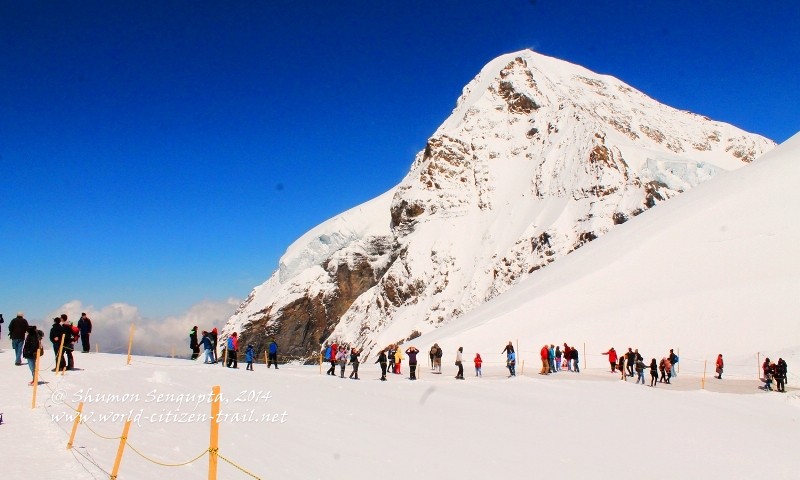
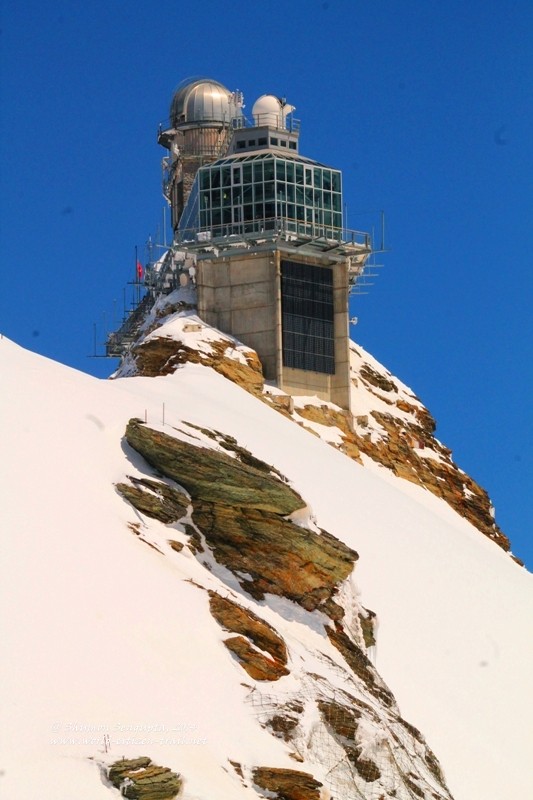
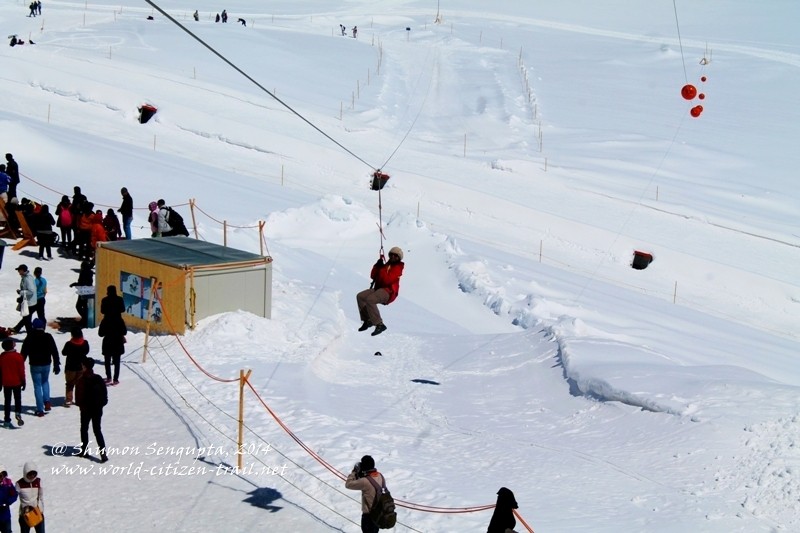
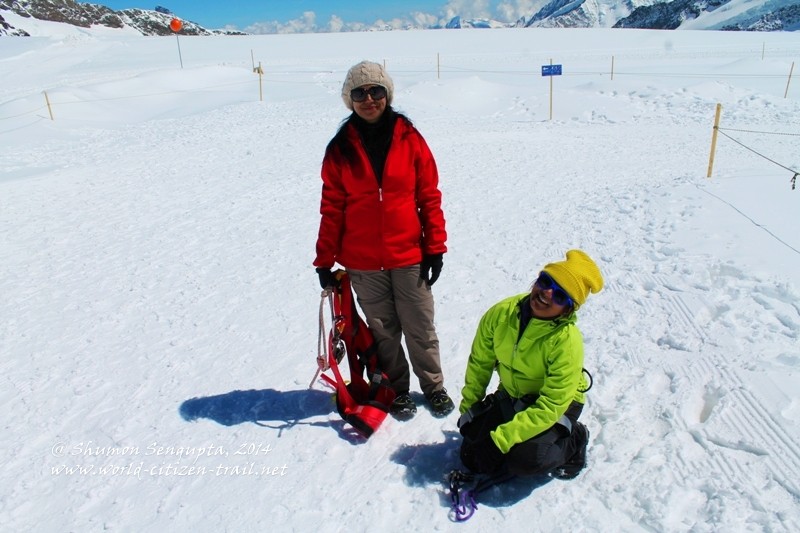
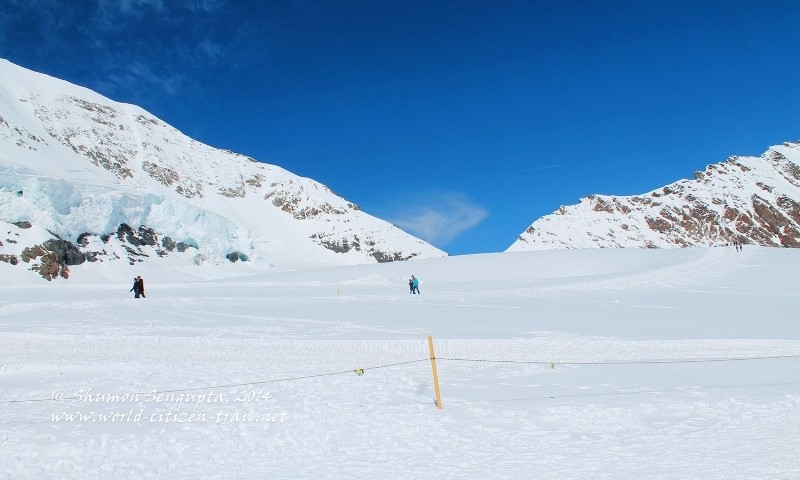
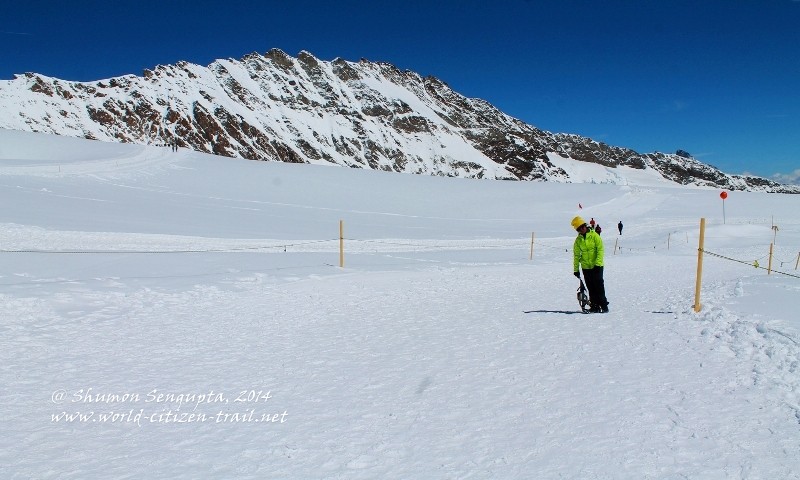
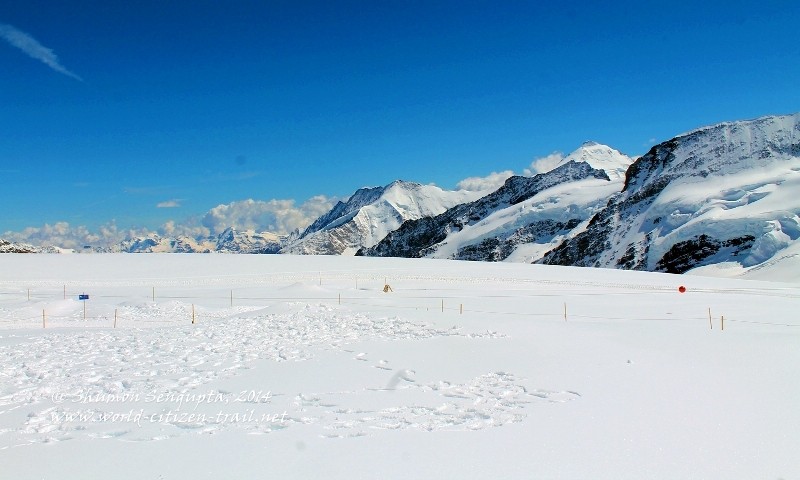
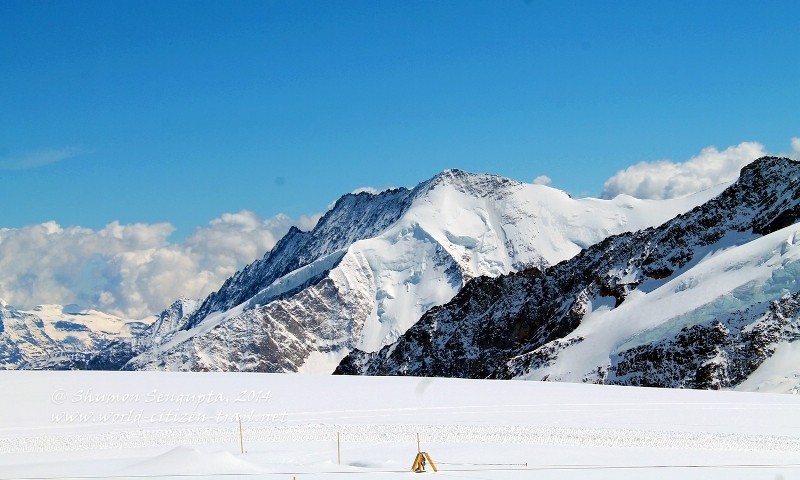
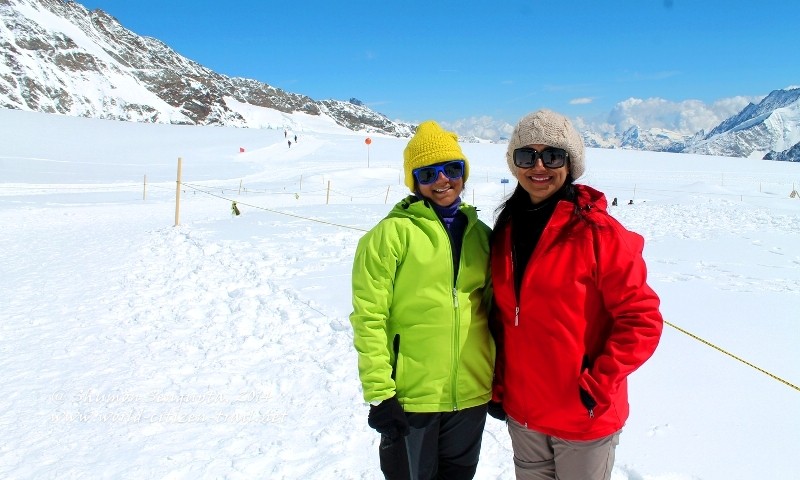
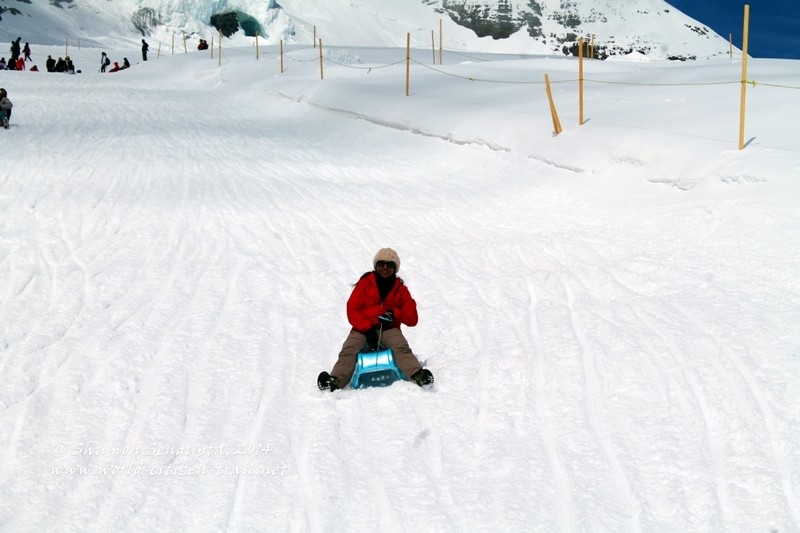
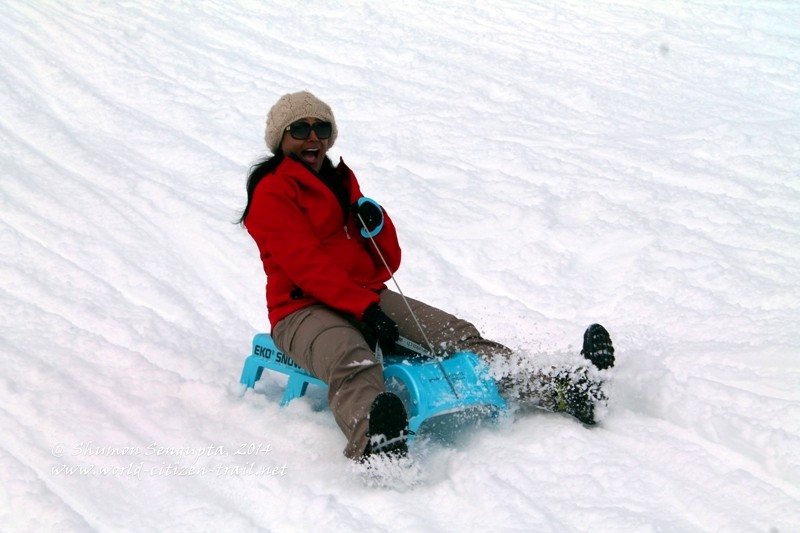
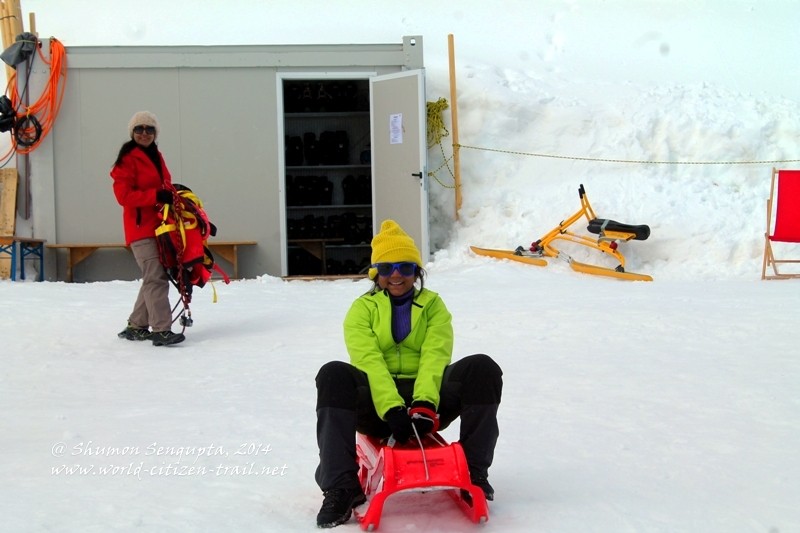
There are two routes between Interlaken and Jungfraujoch – via Lauterbrunnen or Grindelwald and both the routes take two+ hours. We had gone up through Lauterbrunnen, and while returning, we came down through Grindelwald. This circular route gave us a fuller and richer view of this beautiful region. Grindelwald is a beautiful lively village nested at the foot of the North Face of Eiger Mountain. It has a number of idyllic locations offering spectacular views of the surrounding Alpine landscape.
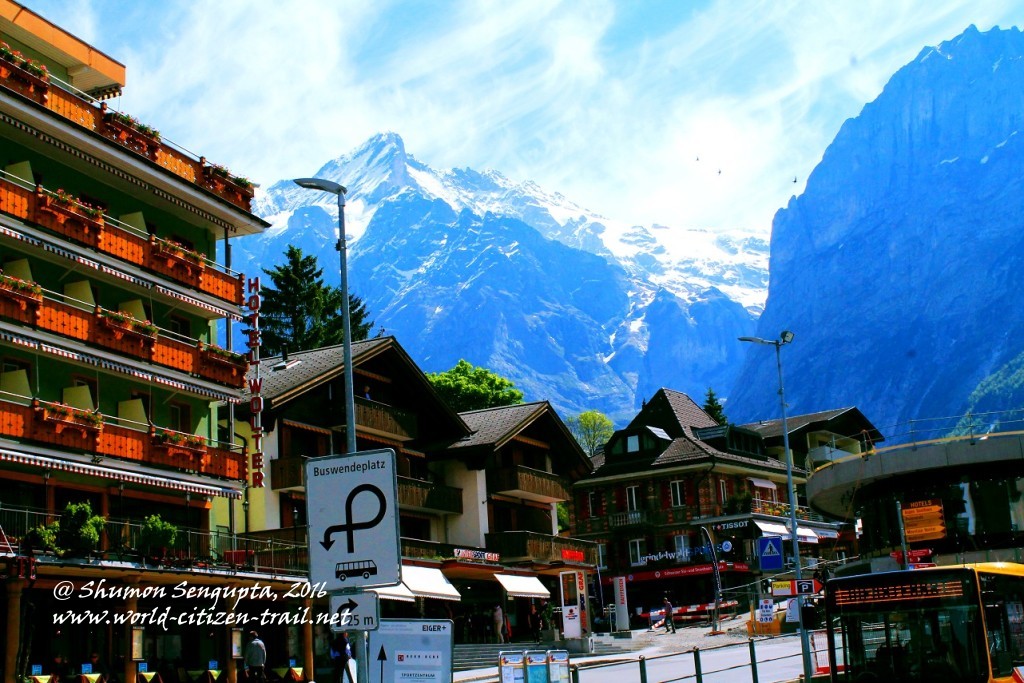
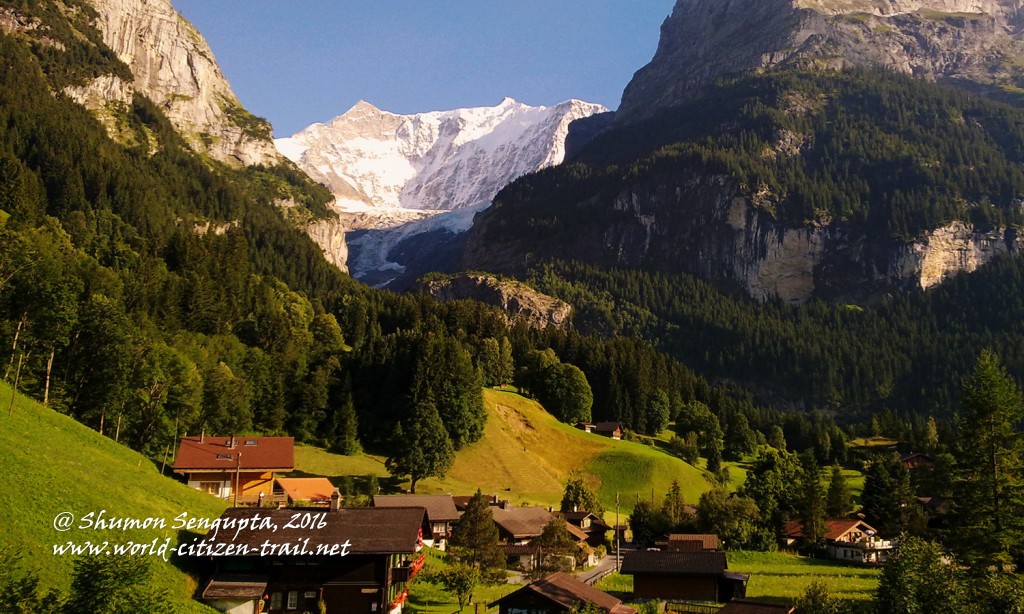
Our trip, from the lush green valley floor to the top at Jungfraujoch, gave us access to a surreal world of great peaks and eternal snow and ice – an area designated as a UNESCO World Heritage Site. Apart from the amazing circular train journey, we saw the formidable Eiger, Mönch and Jungfrau massifs, soaring magnificently from the valley floor, and had breathtaking views of the mighty Aletsch Glacier from very close. We returned to Interlaken, exhausted and exhilarated.
Some tips:
-
Jungfraujoch is an extremely popular tourist destination, particularly with Indians and Japanese. In order to avoid the crowds, go early in the morning. The weather tends to be clearer too. There is a new train leaving/arriving every thirty minutes.
-
You get the best views during the entire journey, sitting on the right side. And take the circular route, via Lauterbrunnen one way, and Grindelwald, the other.
-
Jungfraujoch is often cloudy. So check the weather forecast before booking your tickets.
-
The restaurants up there are expensive and you are sure to get hungry. So if you on a budget, you might want to carry snacks / light lunch and water with you.
-
It gets gradually cold as you go up and it can be very windy at the top. When we went the temperature at the top was minus 6 degrees and it was freezing. So dress in layers, take gloves, good sunglasses, a thick skull cap that covers your ears well, and use a good sunscreen.
-
At 11,332 feet above sea level, you can have mild altitude sickness. I did feel a bit breathless at times. So take it easy at the beginning, and take a painkiller, in case you have a headache. And keep yourself well hydrated.
